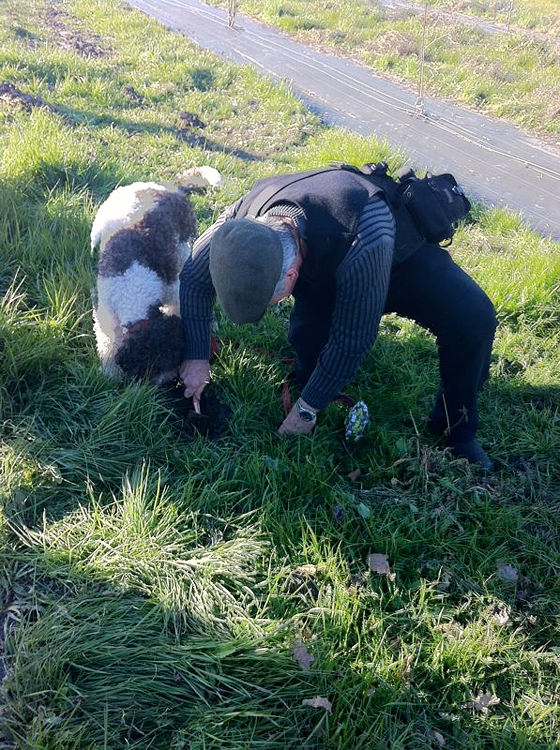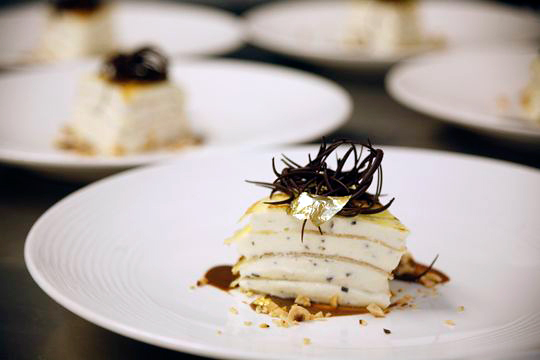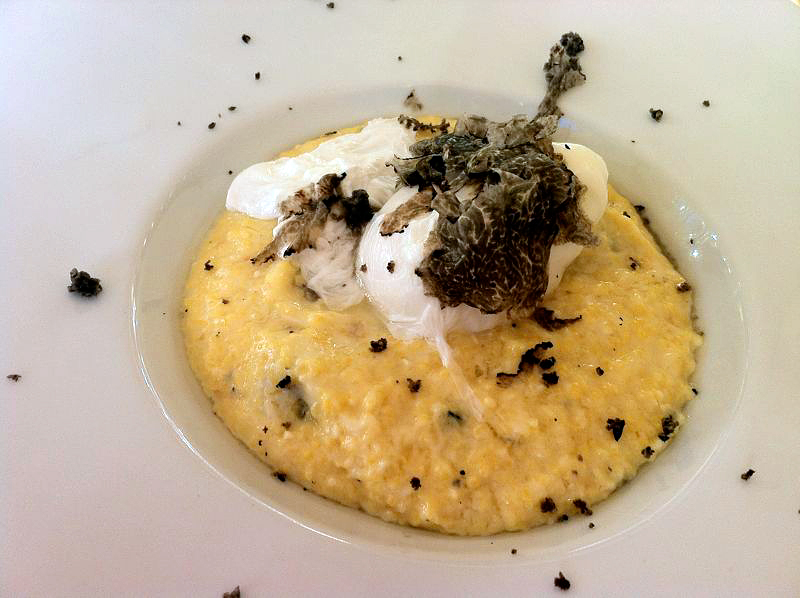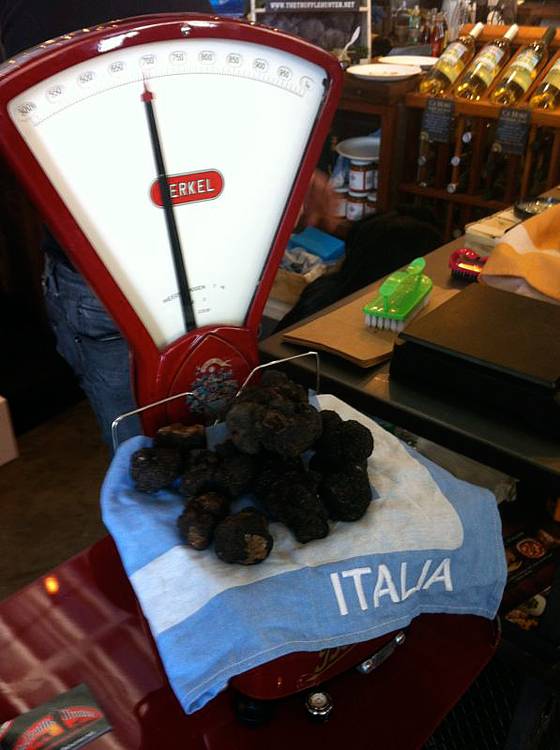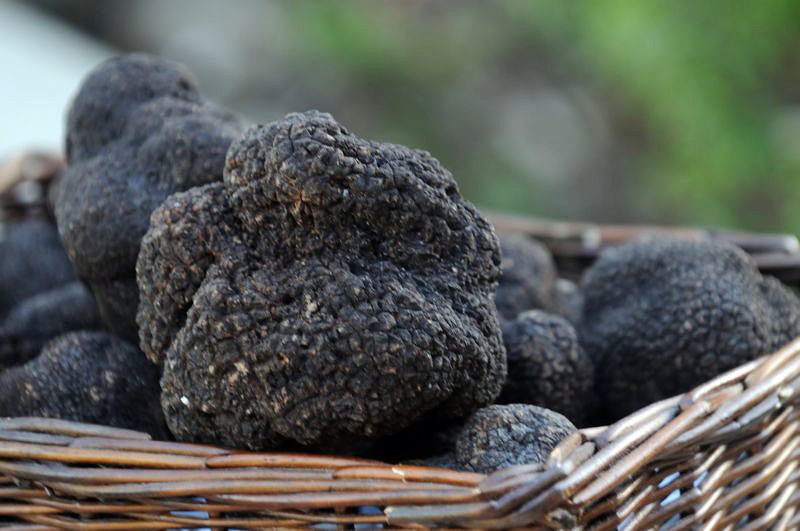
There is no food on earth that inspires obsession like edible wild mushrooms and the Holy Grail of these are truffles. Out of the thousands of species of truffles, two are prized above all others: the white truffle (Alba madonna) and the black Périgord truffle.
Truffles cost more per ounce than many narcotics. They are auctioned off in markets in France and Italy or traded in back alleys. They are then shipped to chefs around the world who shave them over dishes like pasta or risotto in thin, aromatic slivers for well-heeled patrons. The white truffle costs up to $3,600 a pound and has not been successfully cultivated. The black Périgord truffle, named for a region in France but often called “a black diamond” costs up to $2000 a pound has been successfully grown in truffle orchards since the 1800s. Currently, wine producing regions in New Zealand and Australia are also planting and now harvesting black truffles and over 20 other countries have truffle orchards in the works.
Sonoma and Napa may very well be the next major truffle producing regions. This is due to the American Truffle Company. This business was formed by Robert Chang, an engineer from South Bay, and Dr. Paul Thomas, a mycologist from the United Kingdom. They set out to match the science of truffle cultivation with the ideal weather of California wine country. They are working to convince vineyard owners to plant orchards of trees inoculated with truffle spores. The interest is considerable: their town hall meetings in Napa have been sold out and standing room only. One orchard has been planted, four more contracted, and many other grape growers are considering it.
This year they hosted the Third Annual Truffle Festival in the town of Napa on January 18-21 where they rolled out their vision of truffle cultivation. Currently, most black truffles are grown in Europe, but Dr. Paul Thomas explained that black truffles like a climate with winters that range from 30 to 50 degrees and then very sunny summers: California wine country weather. The company provides young oaks and hazelnuts with roots that have been inoculated with truffle spores. They then give support through climatic reports, soil amending tips and irrigation advice.
Robert Chang, co-founder and director of the company, assured future truffle orchard investors that truffle orchards are 7 to 12 times as profitable as vineyards and that the price of truffles will never drop on the world market. This is in part due to the fact that truffles have a very short shelf life, so the less time they have to travel, the better. Robert claims that their business model helps to allay cynicism. “We offer scientific support in exchange for a share of the harvest. And if growers desire, we will help market the truffles.”
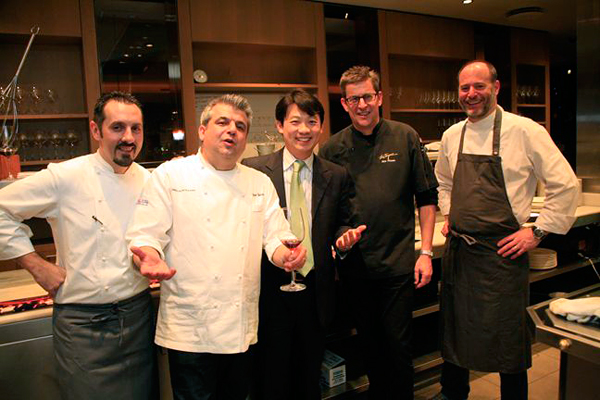
left to right: Marco Gubbiotti of La Bastiglia in Spello, Italy; Nico Chessa of Valentino Restaurant in Santa Monica; Robert Chang, Managing Director of American Truffle Company (producer of the Napa Truffle Festival); Ken Frank of La Toque in Napa; and Michael Tusk of Quince in San Francisco. Photo: Faith Echtermeyer
The Truffle Festival helps the company to develop markets with chefs and create more knowledge and demand for truffles among diners. While vineyard owners who would be potential truffle growers needed a little convincing, diners did not. Every event sold out and visitors huddled around a pizza oven at Silver Oak Winery and watched chef Dominic Orsini shave truffles over sheep’s milk ricotta pizza. Later, he served a truffle luncheon, including black truffle and chicory salad with a quail egg croquette.
